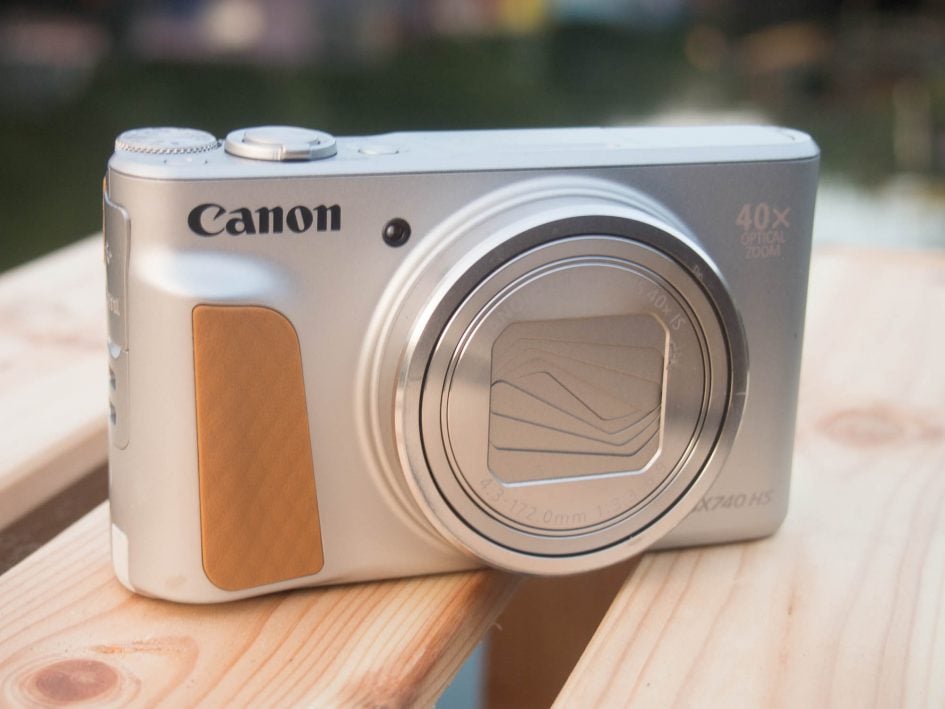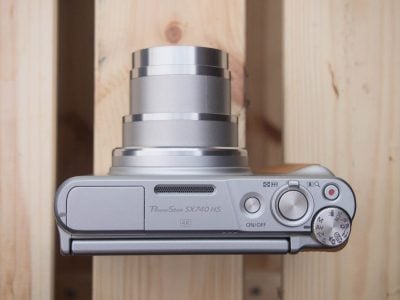Canon SX740 HS review
-
-
Written by Ken McMahon
Verdict
The Canon PowerShot SX740 HS is an update to the SX730 HS from 2017. As upgrades go, it’s on the conservative side, with Canon’s newer DIGIC 8 processor now providing 4k video and 10fps continuous shooting, but everything else remaining pretty much the same as before. The ‘everything else’ of course includes the powerful 40x stabilised optical zoom, which still outguns the 30x zoom on the Panasonic Lumix TZ90 / ZS70, all the additional reach being a the telephoto end. Close up, the SX740 HS also excels at macro photography, getting within 1cm of the subject.
Other features inherited from the previous model include the 20 Megapixel sensor, which produces pretty good quality photos and video at low ISO sensitivities, but succumbs to noise (or rather loss of image detail as a consequence of noise reduction) fairly quickly as the sensitivity increases. The Lumix TZ90 / ZS70 is no different, but it does offer RAW shooting, meaning you can tweak the processing and fine tune the result if you’re so inclined.
The SX740 HS retains the 3 inch 922k dot screen which flips up and over for low and high angle shooting as well as selfies. The Lumix TZ90 / ZZ70 is equally versatile, but also offers touch control, and this makes a big difference to the handling, particularly being able to touch focus for still and video. One of the most frustrating things about the SX740 HS is the fixed central AF area. Another thing to consider is that in addition to the screen the Lumix TZ90 / ZS70 has a built-in electronic viewfinder, which the SX70 HS lacks.

The introduction of the DIGIC 8 processor endows the PowerShot SX740 HS with 4k video and 10fps continuous shooting. As on the Lumix TZ90 / ZS70, the SX740 HS takes a rather severe 8 Megapixel 1:1 crop from the centre of the sensor, so the angle of view is significantly reduced compared with 1080p recording. I should also mention that the SX740 HS lacks PASM exposure control for movies whereas the Lumix lets you make exposure changes silently using the touch screen.
The speed boost to 10fps on the SX740 HS is very welcome, and puts it on a par with the Lumix TZ90 / ZS70, however the latter also boasts 4k photo modes which provide a 30fps burst at 8 Megapixel resolution, not to mention Post Focus and Focus Stacking modes.
Both models are equipped with Wifi, allowing you to download images to your phone and remotely control the camera. The SX740 HS offers a good degree of control for remote shooting over Wifi and the Bluetooth connection allows transfer of images while you shoot plus tagging with location data from your phone. But the Panasonic app remains the Gold Standard for live control over Wifi.
In terms of handling, the Lumix TZ90 / ZS70 is, in a lot of ways, a more sophisticated camera. It has more physical controls including a lens ring and four programmable function buttons (compared with none on the Canon), and the touch screen provides further customisable controls.
Depending on where you shop, you can actually get the Lumix TZ90 / ZS70 for a roughly similar or even slightly lower price thanks to the difference in age. That’s great value if what you’re looking for is a more sophisticated compact with a touch screen and built-in viewfinder, and if the slightly shorter zoom doesn’t bother you. If you like what the SX740 HS has to offer, but not the price, then you can make an even bigger saving with the older SX730 HS, and all you’ll be sacrificing is 4k video and faster continuous shooting. You’ll probably have to get in quick though, as I doubt that option will be open for too long.
Canon PowerShot SX40 HS final Verdict
The Canon Powershot SX740 HS is a pocket super-zoom with a 20 Megapixel sensor and a huge 40X zoom range extending from 24 – 960mm. If it’s the longest zoom in a pocketable compact you’re looking for, you won’t be disappointed. The SX740 HS offers PASM exposure modes, fast 10fps continuous shooting, 4k video, and has a flip up screen that’s great for selfie shooting. On the downside, the 4k video involves a tight crop that may make the effective telephoto reach even longer, but makes the short-end much less wide than when filming in 1080p. To be fair the same restriction applies to the Lumix TZ90 / ZS70 and overall the SX40 HS provides a good balance between simplicity and sophistication for those who like a little bit of control, but are equally happy relying on Auto. Recommended, but also consider its main rival the Lumix TZ90 / ZS70 which may have a slightly shorter range, but offers more physical controls, a touch screen, RAW support and a built-in viewfinder, all for a roughly similar price thanks to being an older model. It’s also worth remembering if you don’t need 4k video or the 10fps bursts, Canon’s previous SX730 HS offers much the same features at a slightly lower price while stocks last.
Check prices on the Canon SX740 HS at Amazon, B&H, Adorama, or Wex. Alternatively get yourself a copy of my In Camera book or treat me to a coffee! Thanks!



